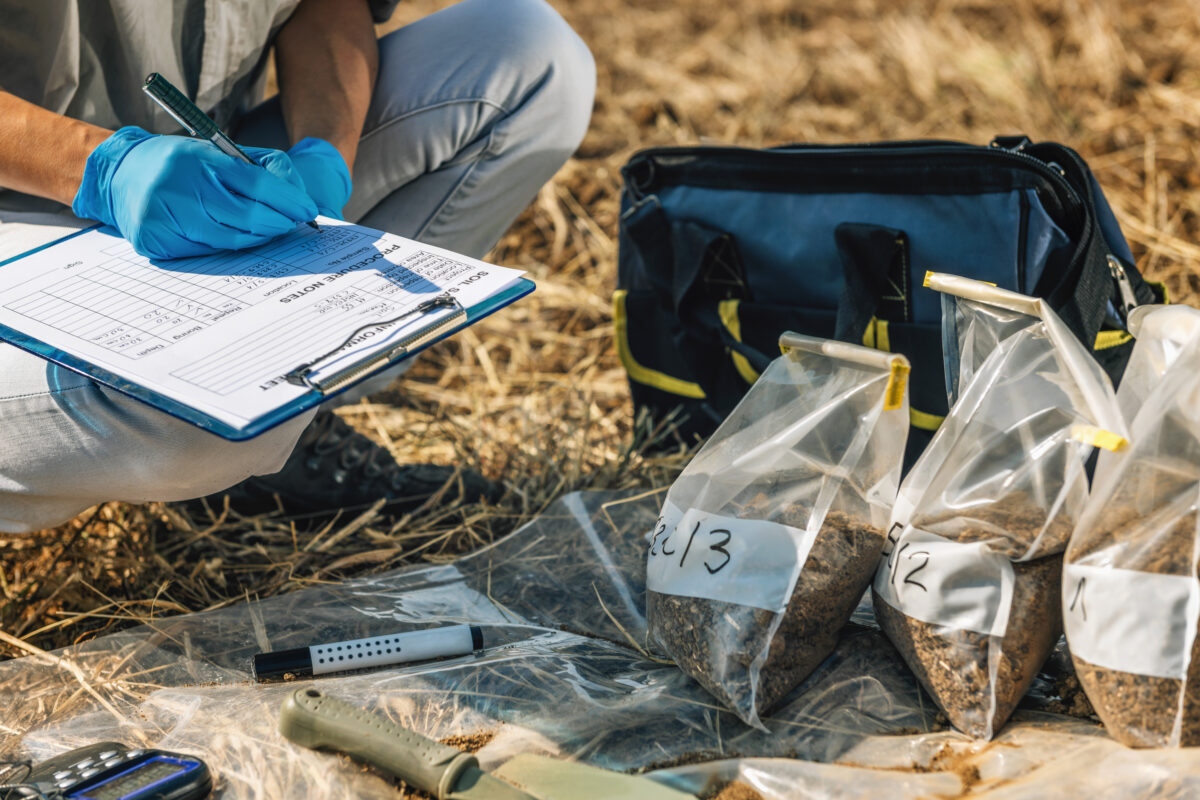You have successfully completed all the lessons in this course. Please verify your identity by entering in your State Recognized ID number or your full name to take the final exam.
Lesson Tag: ESA400TX-BR
Identity Verification
You have successfully completed all the lessons in this course. Please verify your identity by entering in your State Recognized ID number or your full name to take the final exam.
Identity Verification
You have successfully completed all the lessons in this course. Please verify your identity by entering in your State Recognized ID number or your full name to take the final exam.
Identity Verification Copy Copy
You have successfully completed all the lessons in this course. Please verify your identity by entering in your State Recognized ID number or your full name to take the final exam.
Identity Verification Copy
You have successfully completed all the lessons in this course. Please verify your identity by entering in your State Recognized ID number or your full name to take the final exam.
Identity Verification
You have successfully completed all the lessons in this course. Please verify your identity by entering in your State Recognized ID number or your full name to take the final exam.
Identity Verification
You have successfully completed all the lessons in this course. Please verify your identity by entering in your State Recognized ID number or your full name to take the final exam.
Identity Verification
You have successfully completed all the lessons in this course. Please verify your identity by entering in your State Recognized ID number or your full name to take the final exam.
Identity Verification
You have successfully completed all the lessons in this course. Please verify your identity by entering in your State Recognized ID number or your full name to take the final exam.
Identity Verification
You have successfully completed all the lessons in this course. Please verify your identity by entering in your State Recognized ID number or your full name to take the final exam.
Identity Verification Live – IDECC
You have successfully completed all the lessons in this course. Please verify your identity by entering in your State Recognized ID number to take the final exam.
Identity Verification Live – MF321DC-BR
You have successfully completed all the lessons in this course. Please verify your identity by entering in your State Recognized ID number to take the final exam.
Identity Verification Live
You have successfully completed all the lessons in this course. Please verify your identity by entering in your State Recognized ID number to take the final exam.
Identity Verification Live
You have successfully completed all the lessons in this course. Please verify your identity by entering in your State Recognized ID number to take the final exam.
Identity Verification
You have successfully completed all the lessons in this course. Please verify your identity by entering in your State Recognized ID number or your full name to take the final exam.
What is a Phase II Environmental Site Assessment?
- 518 words – Estimated time to complete: 20 minutes
- Written by Kristine Macwilliams, PE
When a Phase I Environmental Site Assessment (ESA) identifies a recognized environmental condition (REC) or the potential for impacts to the subsurface at a site, most clients request to evaluate the potential impacts by performing Phase II Environmental Testing.
The presence of a REC or an environmentally-impacted property can greatly reduce its value. Stakeholders want to reduce liability and future cleanup expenses on their investment by conducting a Phase II ESA, in which a subsurface investigation tests soil, soil gas and/or groundwater to identify sources of environmental impacts.

If a buyer or lender doesn’t have a full scope and realistic picture of a seemingly limited REC, they could be leaving themselves exposed to hidden risk. The Phase II ESA can limit this risk and, in many cases, it can also protect against substantial long-term costs and complex environmental liabilities.
The purpose of a Phase II Environmental Site Assessment Report is to evaluate the presence, or absence of, petroleum products or hazardous substances in the subsurface of the site. A trained, licensed, experienced staff of geologists and engineers that possesses expertise in Phase II Environmental project design performs these assessments per the ASTM E1903-11 Standard Guide.
ASTM E1903-11 provides some basic parameters for Phase II Environmental Assessments, but there is a huge amount of professional judgment that goes into the final report. A lot more goes into the scope of work than just the number of samples taken – for example what type of drilling and sample collection is appropriate for the site and the kinds of contaminants you are looking for. That’s why it pays to engage an informed, experienced due diligence consultant who understands what’s involved in the assessment and the level of certainty your institution requires.
When designing a Phase II ESA scope, the environmental professional accounts for any areas of concern, chemicals of concern, local geology and/or site access issues as well as local, state and federal regulations. An accurate, helpful Phase II ESA delivers local knowledge of geologic and regulatory environments, and then interpreting geological and chemical data to the client so that they are fully informed of their business risk.
Drilling methods used most often by scientists and geologists during Phase II Environmental Testing projects include:
- Push Probe
- Hollow Stem Auger
- Hand Auger
- Mud Rotary
- CPT Drilling
When is a Limited Phase II ESA Called for?
There are circumstances in the due diligence process when a potential property owner does not want to invest in a full Phase II ESA. They may instead opt for a limited Phase II sampling, which is conducted to confirm the presence of a pollutant and may be limited by locations sampled, number of samples, media sampled or a combination. A buyer may conduct a limited Phase II ESA to evaluate the following scenarios to inform their transaction decisions:
- The identified REC from a Phase I ESA is minor or limited in scope
- To confirm a REC that presents more of a risk than the buyer is willing to accept
- To identify a REC that requires more discovery (a full-scale Phase II ESA) to confirm the extent of contamination
What is a Phase I Environmental Site Assessment?
- 750 words – Estimated time to complete: 20 minutes
- Written by Jenny Redlin, REPA and Nicole TK Moore REPA
A Phase I Environmental Site Assessment, commonly referred to as an ESA, or Phase I ESA, is completed to research the current and historical uses of a property as part of a commercial real estate transaction. The intent of the report is to assess if current or historical property uses have impacted the soil or groundwater beneath the property and could pose a threat to the environment and/or human health. If these issues are found, it presents a potential liability for the lender and/or owner, as well as affecting the value of the property.
A Phase I ESA completed prior to the closure of a real estate transaction can be used to satisfy the requirements of CERCLA’s (Comprehensive Environmental Response, Compensation and Liability Act) innocent landowner defense under All Appropriate Inquiries (AAI).
Phase I Environmental Site Assessment reports can be completed on all types of properties including vacant land, agricultural, multi-family residential, commercial, and industrial uses; however, all Phase I ESA reports are completed to comply with ASTM E1527-13 (exceptions are made for properties comprised of large primarily undeveloped land, which can be researched under ASTM E2247-16).

A Phase I ESA typically includes the following:
• A site visit to observe current and past conditions and uses of the property and adjacent properties.
• A review of federal, state, tribal, and local regulatory databases including, but not limited to, underground storage tanks (USTs), aboveground storage tanks (ASTs), known or suspected release cases, the storage of hazardous substances and disposal of hazardous wastes including petroleum products, and institutional and engineering controls.
• A review of historical records, such as historical aerial photographs, fire insurance maps (Sanborn maps), historical city directories, and historical topographic maps.
• A review of state and local agency records, including but not limited to state environmental agencies, Building Departments, Fire Departments, and Health Departments.
• Interviews with current and past property owners, operators, and occupants, or others familiar with the property.
• Interviews with the Report User for title or judicial records for environmental liens and activity and use limitations (AULs); specialized knowledge or experience; actual knowledge; commonly known or reasonably ascertainable information; the reason for a significantly lower purchase price; and the reason for the preparation of the Phase I ESA. It is the User responsibility to provide this information to qualify for the innocent landowner defense.
This research is evaluated by the Environmental Professional (EP) to identify potential environmental risks to the property such as current or historic operations that are known or suspected to have used hazardous substances or petroleum products during onsite operations.

Once a Phase I ESA is complete, the Environmental Professional will summarize what concerns were identified on the property and make recommendations about what actions, if any are needed to address these concerns. A recognized environmental condition (REC) indicates known contamination or the potential for the subsurface to have been impacted by contamination (either from the subject property or possibly from an offsite source).
Common uses of concern are dry cleaners, gas stations, auto/vehicle repair, printing operations and manufacturing. In addition to potential soil and groundwater contamination, ASTM E1527-13 addresses the concerns associated with contamination in soil vapor and the potential for vapor migration to pose a threat to onsite and offsite tenants.
While not part of ASTM requirements, Phase I ESA reports typically include a discussion of observed suspect asbestos containing materials (ACM), potential lead-based paint (LBP) and mold growth; as well as the potential for lead in drinking water and radon. Sampling for these non-ASTM concerns is beyond the scope of a standard Phase I ESA but can be included upon request.
ASTM E1527-13 provides the guidelines for a Phase I ESA report to meet industry standard, but there are other factors to consider when ordering a report. Projects associated with Fannie Mae, Freddie Mac, U.S. Department of Housing and Urban Development (HUD), and the Small Business Association (SBA) each have their own report requirements. This is also true of other lending institutions.
Once a Phase I ESA is complete, the Environmental Professional will summarize what concerns were identified on the property and make recommendations about what actions, if any are needed to address these concerns. A recognized environmental condition (REC) indicates known contamination or the potential for the subsurface to have been impacted by contamination (either from the subject property or possibly from an offsite source).
A controlled recognized environmental condition (CREC) identifies that the property has been impacted by contamination which has been investigated and remediated; however, contamination remains and would require additional work if redeveloped. A historical recognized environmental condition (HREC) identifies a release impacted the subject property which has been investigated and remediated meeting unrestricted use criteria.
The identification of a REC will often include a recommendation for a Phase II Environmental Site Assessment to collect soil, groundwater, and/or soil vapor samples from the subsurface to analyze for the presence of contamination.
Beyond the Big Four: Dialed-In Due Diligence for CRE Acquisitions
When considering pre-acquisition property due diligence, many savvy investors request the “Big Four”: Phase I Environmental Site Assessment (ESA), Property Condition Assessment (PCA), ALTA Survey, and Zoning Compliance Report. However, multiple complimentary services are available to help an investor, property owner and/or lender assess potential risk. Depending on the unique features of the property, as well as the buyer’s anticipated use of the property, the Big Four core services may be supplemented with additional evaluations.
Some of these additional assessments will be driven by the location of the property. For example, properties located in seismically active areas, such as those on the west coast of the United States, may warrant a seismic risk assessment. For areas of high potential radon concentration, a radon survey would be beneficial. Properties that do not have a connection to public water and sewer services may require a drinking water evaluation to screen for lead in drinking water, as well as a septic assessment.
For properties where extensive renovations and/or demolition is planned, a hazardous materials building survey that evaluates the potential for asbestos containing materials, lead based paint, PCBs in caulk, mercury containing devices, and other materials that would require special handling and disposal would be informative. Similarly, for properties where potential development is intended, a wetlands and flood plain evaluation should be considered. An environmental lien search to identify Activity and Use Limitations (AUL) and land use restrictions can also yield valuable information pertaining to the property and potential development challenges.
Acquisitions during the coronavirus pandemic may warrant additional assessments as well. At the onset of the pandemic, many buildings were unexpectedly vacated for what was initially understood to be a short period of time but remained vacant for several months. If your target acquisition has been vacant for a prolonged period, consider an industrial hygiene evaluation to ensure that there are no leaking emergency generators or aboveground storage tanks, mold growth due to unbalanced HVAC and/or pipe leaks, or legionella blooms in water chillers. Solutions can be employed to swiftly and cost effectively address these conditions. As we proceed through the economic impacts of the global pandemic, there may be an increase in foreclosure activity. It may be prudent to conduct a regulatory compliance review pre-foreclosure. Should larger environmental issues be identified, a remedial cost estimate and remedial action plan will be developed.
For a potential property owner who wants to ensure appropriate conditions for future occupants and/or tenants, an Indoor Air Quality (IAQ) evaluation can be illustrative. Currently, there is an increased focus on industrial hygiene in commercial properties, primarily driven in response to COVID-19. Many commercial spaces are undergoing deep cleaning. Property owners may want to perform an IH cleaning evaluation on a regular schedule to provide confidence to their occupants.
With so many factors involved, developing a due diligence strategy requires thorough understanding of what tools are available and when to deploy them. You may find it helpful to use a due diligence checklist. Work with your due diligence consultant to develop a risk mitigation protocol that incorporates your business objectives and your level of risk tolerance, as well as the specific attributes of your target acquisition.
Environmental Consultants
Video Time: 1 Minutes
Joseph Derhake outlines what an investor should look for when choosing an environmental consultant. A number of environmental consulting firms specialize in other things but will do an ESA if asked. ESAs are often relied upon by multiple parties. There is a benefit to choosing a firm that is credible with a number of different stakeholders.
After watching the video, be sure to complete the one-question quiz to proceed.
Challenges During Phase II
Video Time: 2 Minutes
What challenges might arise when there is a need for a Phase Two?
Stephanie Trueb discusses the challenges that arise during a Phase II assessment. A lot of lenders don’t want the sign the engagement for a Phase II because there is liability involved with going out to the property and drilling. More often over the past several years, lenders are requiring borrowers to engage consulting firms for Phase II assessments.
After watching the video, be sure to complete the one-question quiz to proceed.